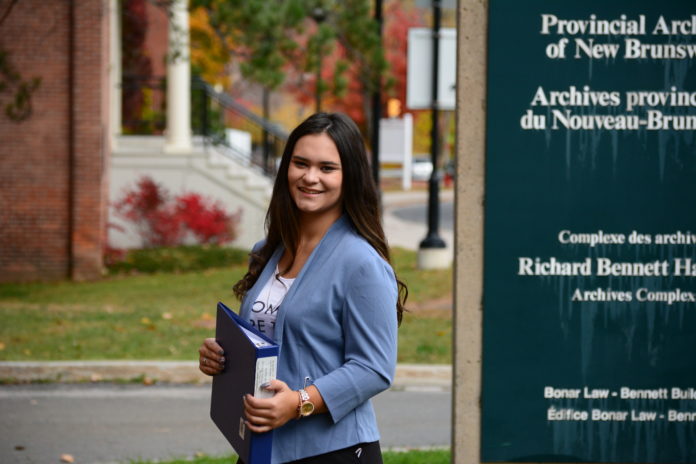

Leanne Hudson, a St. Thomas University Mi’kmaw student, said New Brunswick needed educational resources because Indigenous history isn’t being taught enough in school curriculums — so she created her own.
“You’re not seeing all these pieces of history fully developed or talked about,” said Hudson, who belongs to Acadia First Nation in Nova Scotia. “I think that’s why I really have this passion to fill those gaps that aren’t being taught.”
In her second semester at STU, Hudson applied for the Truth and Reconciliation Commission internship through the Provincial Archives of New Brunswick. Her job was to bring more Indigenous awareness to the archives and develop some resources to make the records easier to navigate.
“I didn’t really know where it was headed or where it was going to end up,” said Hudson.
Her project became a 34-page guide that includes Indigenous history found within the provincial archives called Integration of Indigenous Culture, Knowledge and Traditions.
The book includes information about the Mi’kmaq, Wolastoqi, Penobscot and Passamaquoddy Peoples and will be available in English and French.
Hudson said the guide deals with four main themes: traditional Indigenous reserve land; traditional Indigenous practices and ceremonies; language and historic forms like storytelling, written language, verbal language, petroglyphs and hieroglyphics; and the relationship between the provincial government and Indigenous communities in N.B.
“It gives general context throughout all four scenes on cultural history, but also modern culture, to [point out] that this culture is not just a historic subject, but it’s also very much modern culture that we can still learn about today,” she said.
Hudson sits on several committees for advocacy and education including ones for Indigenous Peoples. Last year, she was the Indigenous student representative for the St. Thomas University Students’ Union. She said her experience in that position helped with the creation of her book because it reminded her why Indigenous resources are important.
“I was able to speak with students first-hand. I was able to advocate for them [and] I was able to provide them with new experiences,” said Hudson.
The written component of the book is finished but Hudson said it is still awaiting illustration. In December, Megan Gallant, a Nova Scotia-based artist and past Mount Allison University student, was interested in illustrating the book and signed a contract.
Hudson hopes the guide will be published and available to the public by the end of the academic year because it will take time for the artwork to be completed and formatted with the book.
Her original goal was to get the guide into the hands of teachers after publication to supplement some of the gaps she experienced as an Indigenous student going through the public school system. But she said the guide is a valuable resource for anyone.
Hudson said it’s important to know about Indigenous Peoples and the history of Indigenous communities in N.B. She said it’s important for people to understand why some injustices and inequalities against Indigenous Peoples are coming to light.
“It’s near and dear to my heart,” said Hudson. “I have a strong belief that we can improve how we support our minority groups and those who have been historically disadvantaged.”
